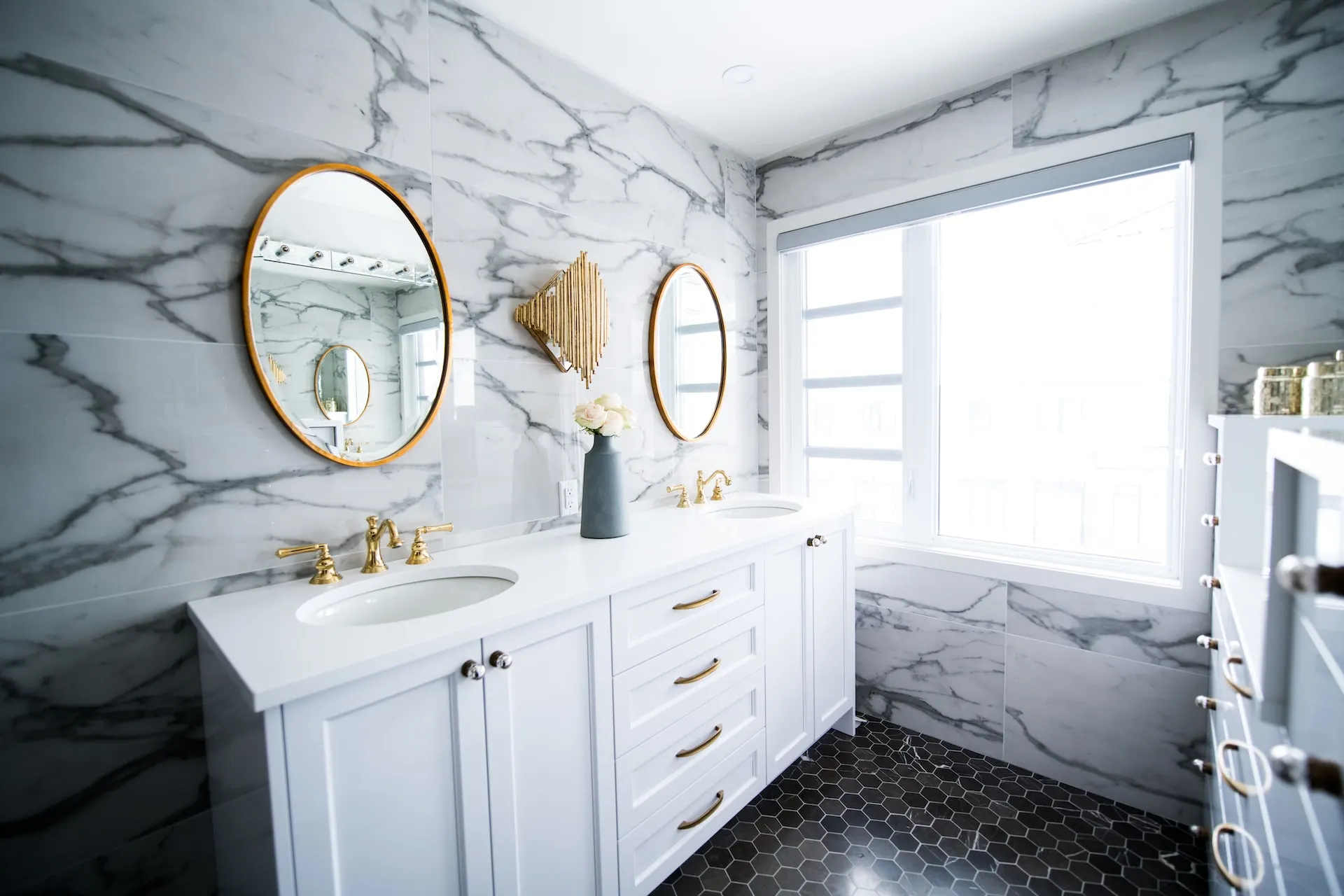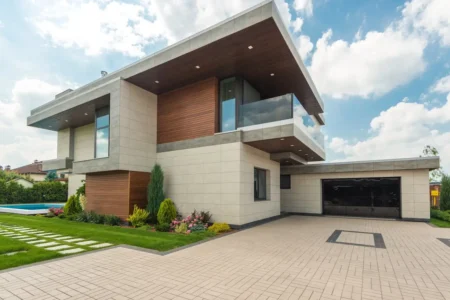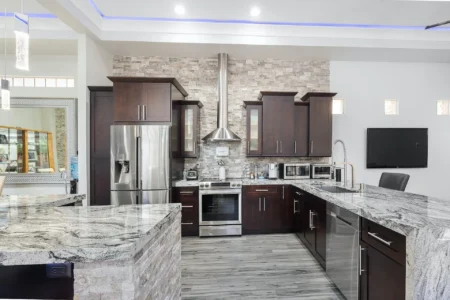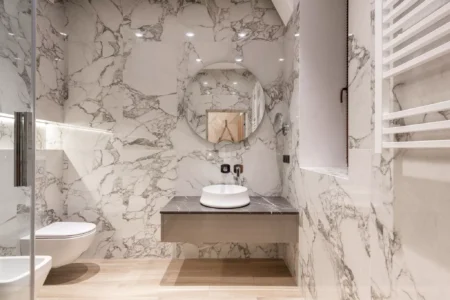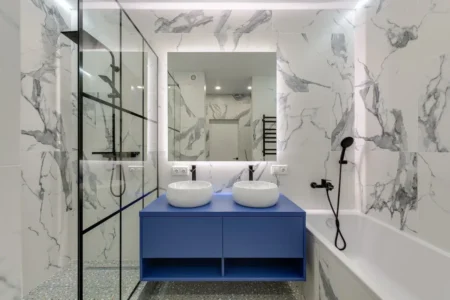The right tile can transform a small room into a cozy, inviting space. It’s not just about aesthetics; the right tile can also make a small room appear larger and brighter. But with so many options available, how do you choose the perfect tile for your small room? This blog post will guide you through the process, providing expert tips and insights to help you make the best decision.
Choosing the Perfect Tile for Your Small Room
Before we dive into the specifics, it’s important to understand the role tiles play in a room. Tiles are not just a practical flooring solution; they are a key element of your room’s design. They can create a sense of space, add warmth, or inject a pop of color.
- Consider the Size of the Tile: When it comes to small rooms, the size of the tile can make a significant difference. Large tiles can create an illusion of space as they have fewer grout lines, which can make the room appear larger and more open. However, they need to be laid out correctly to avoid making the room look disproportionate. On the other hand, small tiles, such as mosaics, can add detail and interest to the room, but they can also make the room feel busier and more cramped if not used sparingly.
- Choose the Right Color: The color of your tiles can dramatically affect how spacious your room feels. Light-colored tiles, such as whites, creams, and pastels, can reflect light and make the room feel brighter and larger. Dark tiles can add depth and warmth, but they can also make the room feel smaller if used excessively. A good strategy is to use dark tiles sparingly as accents or in specific areas.
- Think About the Material: The material of the tile can also influence the feel of the room. Ceramic and porcelain tiles are durable and easy to clean, making them a practical choice for high-traffic areas. Natural stone tiles, such as marble or granite, can add a touch of luxury and uniqueness, but they require more maintenance.
- Pattern Matters: The pattern on your tiles can add personality and style to your room. Geometric patterns can create a modern, edgy look, while floral or organic patterns can create a softer, more traditional feel. However, in a small room, it’s best to keep patterns simple and minimal to avoid overwhelming the space.
- Grout Color and Width: The color and width of your grout lines can also impact the overall look of your room. Narrow grout lines and grout that matches the color of your tiles can create a seamless look, making the room appear larger. Contrastingly, wider grout lines and contrasting grout colors can highlight the shape and layout of your tiles, adding visual interest.
Choosing the perfect tile for your small room involves considering various factors, including the size, color, material, pattern, and grout of the tiles. By taking these factors into account, you can create a space that not only looks great but also feels spacious and comfortable.
Tile Trends for Small Spaces
As with any aspect of interior design, trends in tile choices evolve over time. However, certain styles have proven to be particularly effective in small spaces. Let’s explore some of the current tile trends that work best for small rooms.
- Subway Tiles: A classic choice, subway tiles are a popular trend that works exceptionally well in small spaces. Their elongated shape and simple design can make a room appear longer or taller, depending on the orientation. They’re versatile, available in a variety of colors, and can fit into almost any design style, from traditional to modern.
- Hexagonal Tiles: Hexagonal tiles are a modern trend that adds a unique geometric pattern to your room. Despite their complex shape, they can work well in small spaces, especially when used in light colors. They can be used on both floors and walls to create a cohesive look.
- Terrazzo Tiles: Terrazzo is a trend that has made a significant comeback. Its speckled pattern can add depth and interest to a small room without overwhelming it. Plus, terrazzo tiles is durable and easy to maintain, making it a practical choice as well.
- Wood-Look Tiles: If you love the look of hardwood but want the durability of tiles, wood-look tiles are a perfect choice. They can add warmth and a natural feel to a small room, making it more inviting. Plus, they’re available in a variety of colors and patterns, allowing you to customize the look to your liking.
- Monochromatic Tiles: A monochromatic color scheme can make a small room appear larger. Using tiles in varying shades of the same color can add depth and interest while maintaining a cohesive look. This trend can be applied to any tile shape or size, making it a versatile choice.
These trends offer a variety of ways to make your small room appear larger and more stylish. However, trends are just that—trends. It’s important to choose a tile that you love and that fits your personal style and the overall design of your home.
How to Choose the Right Texture and Finish of Tiles for a Small Room
The texture and finish of your tiles can significantly impact the overall look and feel of your small room. Here are some factors to consider when making your choice:
- Matte vs. Glossy Finish: Tiles come in various finishes, the most common being matte and glossy. Matte tiles absorb light, reducing glare and making them a good choice for a relaxed, natural look. They also tend to show less dirt and smudges. Glossy tiles, on the other hand, reflect light, which can make a small room appear larger and brighter. However, they may show dirt and smudges more easily.
- Textured Tiles: Textured tiles can add depth and interest to a small room. They can also provide additional grip, making them a good choice for areas like the bathroom. However, they can be harder to clean than smooth tiles, so keep this in mind when making your choice.
- Patterned Tiles: Patterned tiles can add a unique touch to your room. However, in a small space, it’s important to be careful not to overwhelm the room with too much pattern. Consider using patterned tiles as an accent, such as in a backsplash or on a feature wall.
- Tile Edges: Tiles can have straight or rectified edges, or they can be cushioned or pillow-edged. Straight-edged tiles give a clean, modern look and can make a small room appear larger due to the thin grout lines. Cushioned tiles have a more traditional look and can add a sense of warmth and coziness.
- Grout Finish: The finish of your grout can also impact the look of your room. A contrasting grout can highlight the shape and pattern of your tiles, while a matching grout can create a seamless look.
Choosing the right texture and finish for your tiles can enhance the overall design of your small room. By considering these factors, you can create a space that is not only beautiful but also functional.
Conclusion
Choosing the right tile for a small room can seem like a daunting task, but with the right knowledge and a bit of creativity, it can become an exciting design project. Remember, the perfect tile for your small room is one that not only makes the space appear larger and brighter but also reflects your personal style and meets your practical needs.
From considering the size, color, and material of the tiles to keeping up with the latest trends and understanding the impact of texture and finish, there are many factors to consider. But don’t be overwhelmed. Take one step at a time, and don’t be afraid to experiment and try out different options.
Remember, your small room is a canvas for you to express your creativity and style. With the right tile, you can transform it into a space that is uniquely yours. So go ahead, start exploring your options, and create a space that you love!
